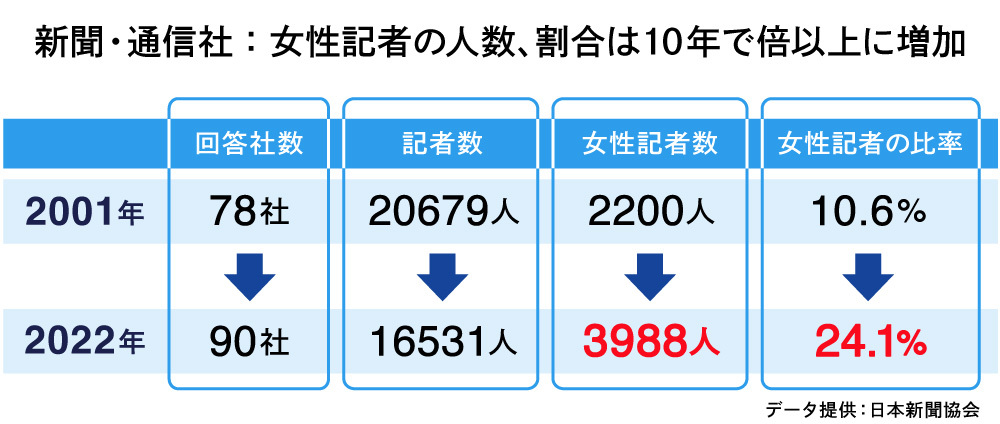Public Relations (PR) and journalism, while differing in purpose, share the common aspect of conveying information and stories to the public.
PR professionals, whether in-house PR staff or external PR agencies, convey the information they wish to share to the world through journalists and the media outlets they belong to.
Conversely, journalists sometimes interview PR professionals as news sources.
In this article, the author—a long-time PR agency employee—examines trends in advanced global media. We propose how PR professionals should respond to changes in media reporting structures and the information consumption styles of the general public.
Media Relations: The Core of PR
The integrated PESO (Paid, Earned, Shared, Owned) media model emerged in the PR industry around 2010.
This concept involves PR professionals managing the entire flow of information not only through "news media coverage (Earned Media)" but also across "advertising (Paid Media)," "Owned Media," and "Shared Media."
Among these, the core of public relations (PR) practice is "Earned Media, "also known as publicity.
News media coverage is generated either through "media relations"—where companies or brands reach out to media (journalists)—or through organic approaches from media (journalists) to companies or brands.
Here, "organic" means coverage and reporting occur based solely on the media's independent judgment, without any outreach from the brand or company.
Conversely, the former, Media Relations, involves approaches such as issuing information to news media through "press releases" or "press conferences" to secure coverage.
After the PESO media model gained traction, "brand journalism"—where companies and brands use their own media (Owned Media) to communicate—gained attention. Emphasis shifted to bypassing news media and delivering stories directly to consumers, elevating the importance of "Owned Media."
In normal times, companies and brands can use owned media to directly deliver "brand news," such as information related to SDGs, to consumers. They can control the information they wish to share and communicate their stories in the desired format. However, when disclosing "real news," such as critical business information, PR professionals must engage with news media.
Furthermore, the importance of news media coverage has not diminished. Amidst the proliferation of intentionally spread fake news, AI-generated fake videos ("deepfakes"), unintentional misinformation, and even misleading information that, while not factually incorrect, is taken out of context, trust in content produced by professional journalists continues to grow.
Throughout PR history, no matter how its importance has shifted, the core function remains unchanged: conveying corporate and brand information to news media as "content from a trusted third party."
How has the explosive proliferation of smartphones and social media transformed journalism?
Here, we step away from PR for a moment to first examine the current state of journalism.
In Japan, around 2010, smartphones began to proliferate, and as social media usage expanded, significant changes occurred in information consumption.
A particularly major turning point came in March 2013. That's when Tokyo Metro and Toei Subway lines enabled mobile phone connectivity throughout their entire networks while trains were in motion. The following year, Osaka Municipal Subway also enabled mobile phone use across all its lines, ending the era of "subway = no signal."
How did this technological evolution and improvement in social infrastructure impact journalism?
People who had previously read paper newspapers during their commute began peering at smartphone screens instead. According to the "10th National Media Opinion Survey" conducted by the Newspaper and Communications Research Institute in 2017, 71.4% of respondents read online news, surpassing those reading morning newspapers (68.5%) for the first time.
Furthermore, news identical to that in newspapers can be read online for free. While some articles include paid content, the premise that "news is free" has taken hold, leading to numerous similar news stories appearing online.
Particularly for "straight news" – reports that simply convey what happened – the content is nearly identical, differing only slightly in nuance. This has accelerated the "commoditization" of straight news reported by major media outlets.
The digital transformation of news media itself has also contributed to declining print newspaper circulation. According to the Japan Newspaper Publishers & Editors Association, the total circulation of member newspapers was 71,896,000 copies in 2000. Twenty-two years later, in 2022, it had fallen to 36,775,000 copies. This represents a 48.8% decrease, meaning circulation has nearly halved(※).
(Note: Morning and evening editions sold together are counted as one morning edition and one evening edition, totaling two copies)
"Digital-First, Subscription-First" Overseas Media
Meanwhile, how have media outlets in Europe and the US, where digitalization and globalization are advancing, changed?
Take The New York Times in the US, for example. In February 2022, it announced surpassing 10 million paid subscribers following its acquisition of the US online sports media outlet "The Athletic." Of these, "digital subscriptions"—including apps for crossword puzzles and cooking recipes—accounted for 8,005,000.
Pursuing a "digital-first" and "subscription-first" strategy, it expanded its readership beyond the US, transforming from an American daily newspaper into a global media outlet. Since February 2017, it has also advanced its multimedia efforts, including the free distribution of the podcast "The Daily."
In the UK, examples include The Independent, which discontinued its print edition in 2016 and fully transitioned to digital, and the Financial Times (FT), which actively advanced the digitization of its editorial operations.
In a March 1, 2022 press release, the FT announced it had surpassed one million paid digital subscribers. While the FT has always aimed for a business model less reliant on advertising revenue, which fluctuates with economic trends, it has focused on expanding its digital subscriber base. Over half of these subscribers are located "outside the UK." Like The New York Times, it has pursued globalization.
At the same time, the FT is attempting to reform its content production to prevent a decline in revenue due to the commoditization of news. For example, analysis of reader access data revealed that access peaks in the early morning and during the day, so the FT has shifted the peak of its editing process to those times.
Robin Hardy, FT Asia Editor, said the following in a lecture hosted by the Japan Public Relations Association on February 9, 2021.
"Currently, FT online articles are either short or long, and readers will not read anything in between. Readers want to get important news as quickly as possible or delve deeply into specific issues. Therefore, we try to write short news articles of about 500 words or feature articles of 1,800 to 2,000 words. Articles of 800 to 1,000 words are not read. Articles of this length are too short for deep consideration, and readers who browse (skim) cannot finish reading them."
PR professionals should become "interpreters"
Furthermore, page views for the online edition show that analysis pieces receive the most views at the FT. While demand for "straight news" remains high, analysis pieces hold greater value because they are harder for competitors to copy.
This focus on analysis and investigative reporting isn't unique to the FT; publications like the U.S.'s Wall Street Journal (WSJ) follow the same trend.
Seiji Nishiyama, Editor-in-Chief of the Wall Street Journal Japan Edition, describes this media approach as follows:
"In English, we sometimes call an 'article' an 'article,' but we often say 'story' and consider 'storytelling' to be important. WSJ and other Western media have a strong awareness of this, which is why individual pieces tend to be longer. For instance, pieces offering different perspectives, like behind-the-scenes development stories or insider accounts, are consciously treated as 'stories' rather than mere 'articles'." (Mr. Nishiyama, July 7, 2022, from a lecture hosted by the Japan Public Relations Association)
As mentioned at the outset, PR and journalism exist in a kind of symbiotic relationship. Much of the news reported by media outlets originates from sources such as press releases provided by PR professionals or information offered at press conferences.
Within this symbiotic relationship, PR professionals must aim for the information they provide to be reported not just as straight news, but as a "story."
To achieve this, it is important to become a "commentator" who can understand and explain the background and significance of the information, rather than simply delivering the facts about products and services to the media. Furthermore, it is also key to prepare data that can contribute to analytical articles.
Mr. Hardy of the FT said the following about this.
"We reporters want to convey what something means rather than just what happened. To do that, we need to know why something is happening rather than just what is happening. In order for us to gain that understanding, we need deep conversations between reporters and PR practitioners."
The Perspective of Diversity Required in Media Relations
Finally, we will consider the importance of diversity in media relations, which has become increasingly important in recent years.
The FT is also attempting content reform with the separate goal of promoting diversity. The company holds annual internal hackathons to create new products.
In 2017, this hackathon led to the development of a bot called "JanetBot" to boost engagement among female readers. This bot checks the gender of people pictured in online articles every ten minutes.
This initiative stemmed from reader feedback stating "FT articles feature too many photos of men in suits." It was born from the hypothesis that "having faces visibly representing our attributes on the page would likely increase female reader engagement."
On the day the bot's prototype was completed, US Treasury Secretary Janet Yellen was featured in more than three FT articles. The bot was named "JanetBot" as a tribute to her.

JanetBot identifies the gender of individuals appearing in photos on the page. Image credit: Financial Times
The following year, the FT launched another bot called "She said He said." This bot checks the gender balance on the page by identifying the gender of columnists and others based on their names.
Through these tools, the FT sought to verify whether women's voices were adequately reflected in its pages.
Regarding diversity in journalism, the World Association of Newspapers and News Publishers (WAN-IFRA) published "A Gender Balance Guide for Media" in April 2020.
The Japan Newspaper Publishers & Editors Association is also a member of WAN-IFRA, but I haven't heard of any initiatives in Japan that leverage technology like the FT's to promote diversity in reporting.
However, according to the Japan Newspaper Publishers & Editors Association, despite a decrease in the total number of reporters at member companies, the proportion of female reporters has increased, rising from 10.6% in 2001 to 24.1% in 2022.
While the number of women in management positions remains low and decision-makers determining editorial policy are predominantly male, diversity in reporting perspectives appears to be progressing.
Since diverse perspectives in reporting enhance reader engagement and media coverage is moving in this direction, it is crucial for PR professionals to also prioritize diversity in media relations.
PR campaigns should be planned and executed incorporating perspectives from people with diverse backgrounds. Furthermore, spokespersons and opinion leaders should be selected with diversity in mind, enabling communication activities to proceed with a more multifaceted perspective.
Regarding diversity, attention must extend beyond gender balance to include sexual minorities such as LGBTQ+, people with disabilities, racial minorities, and the elderly.
In today's era, it is vital for PR professionals to constantly be aware of what the media demands—such as analytical articles, investigative reporting, and diversity-focused content—and what the consumers beyond the media ultimately seek, and to provide information accordingly.









